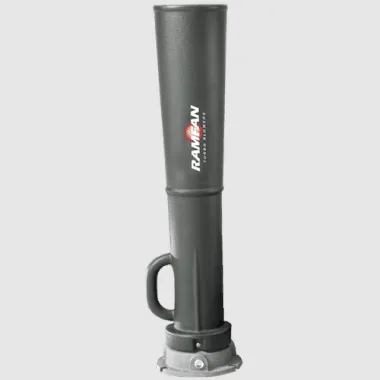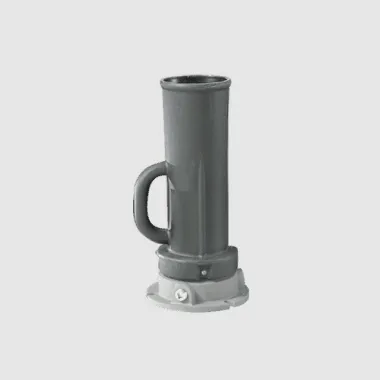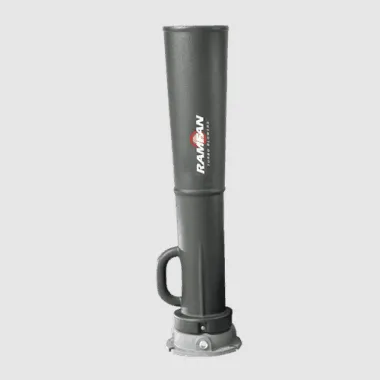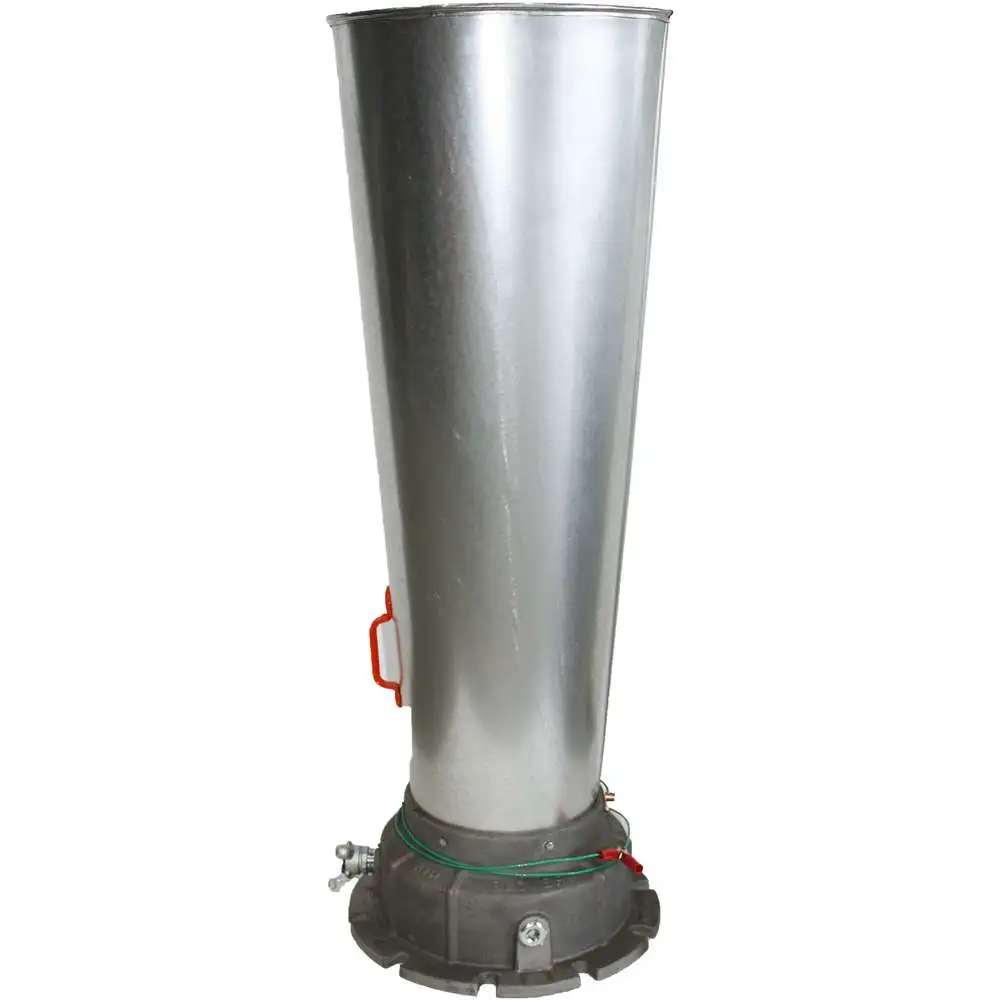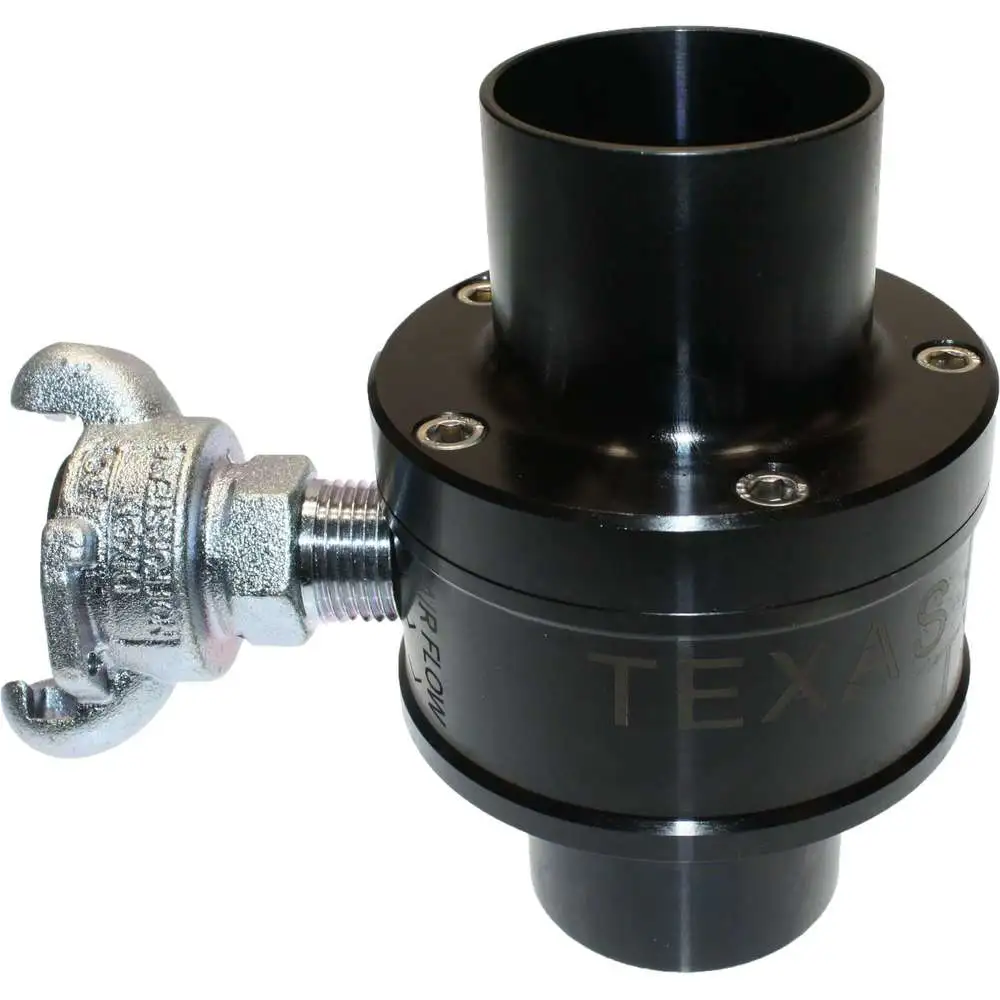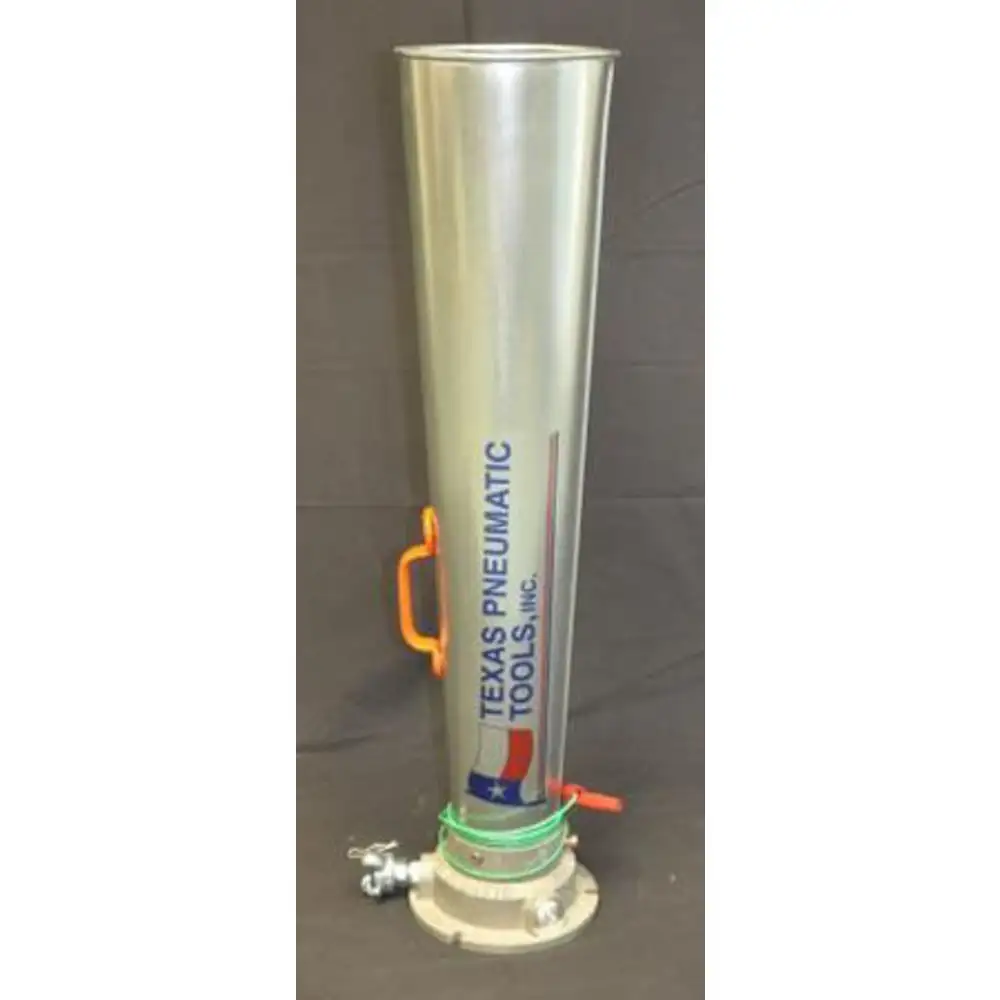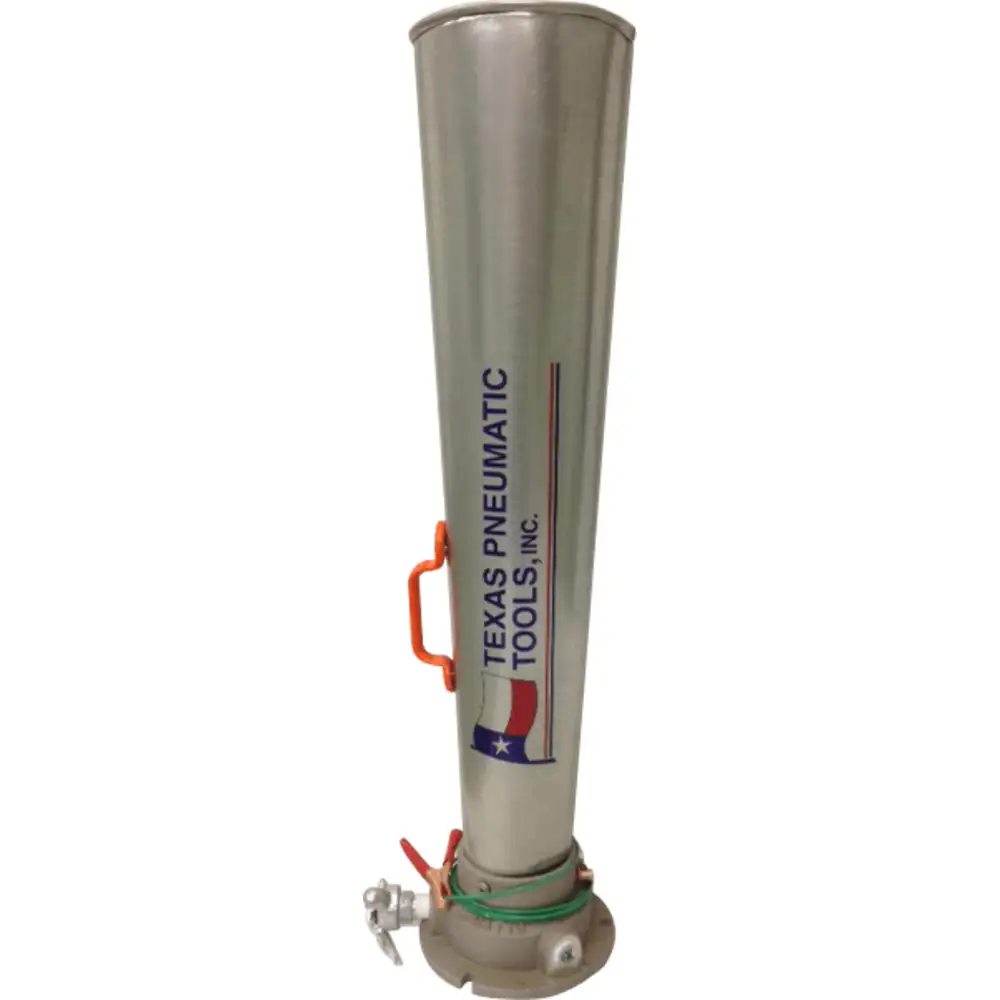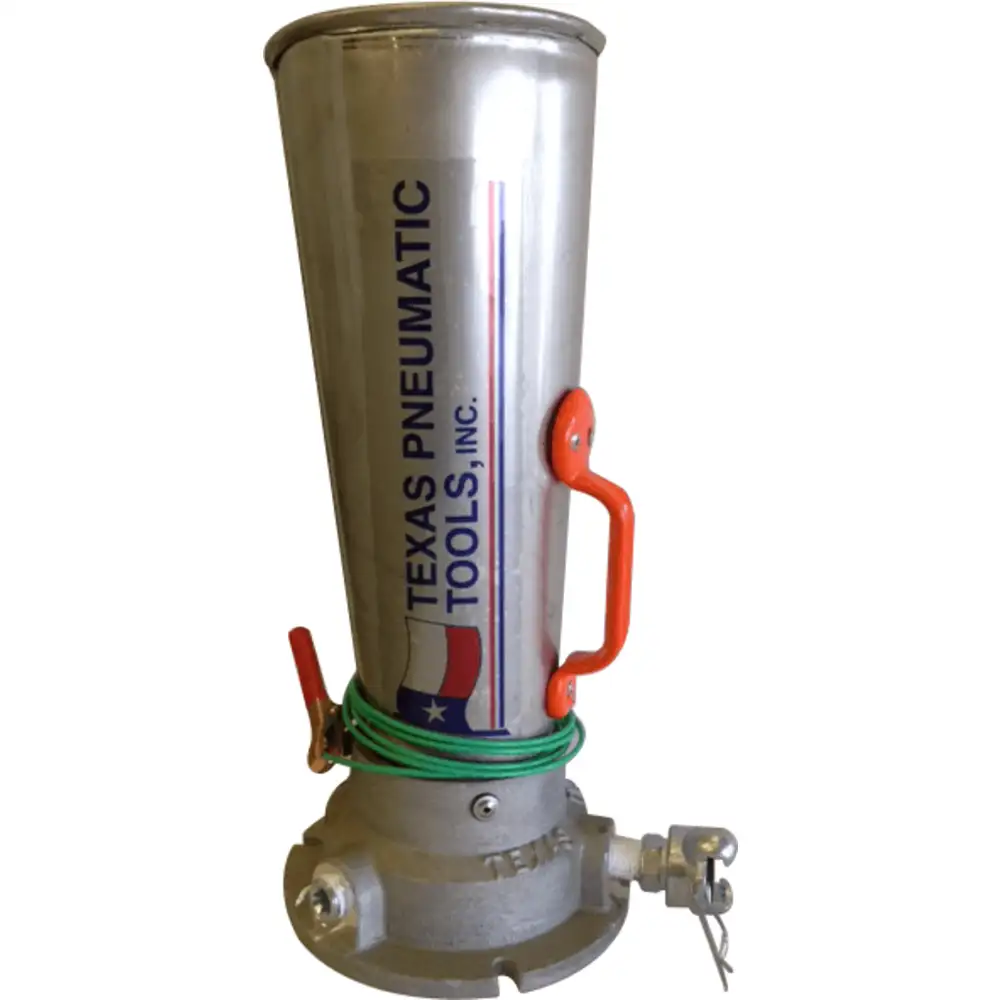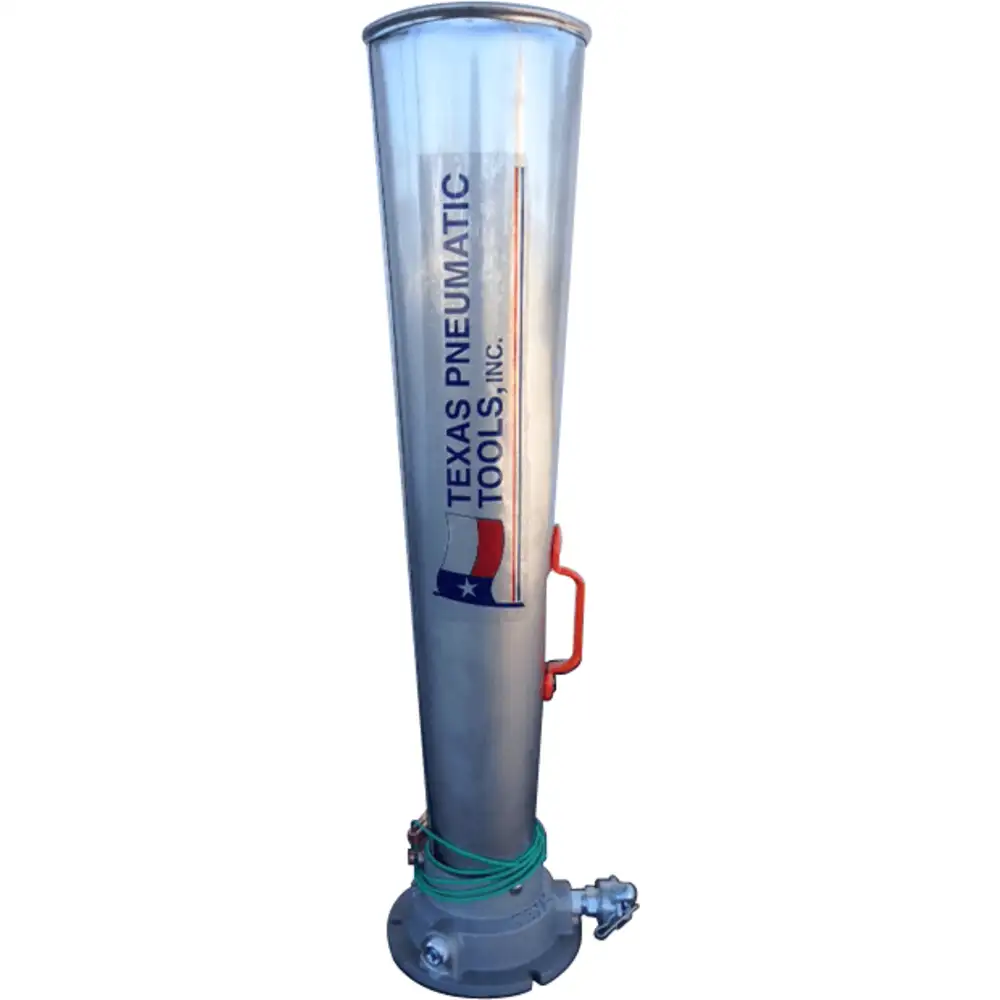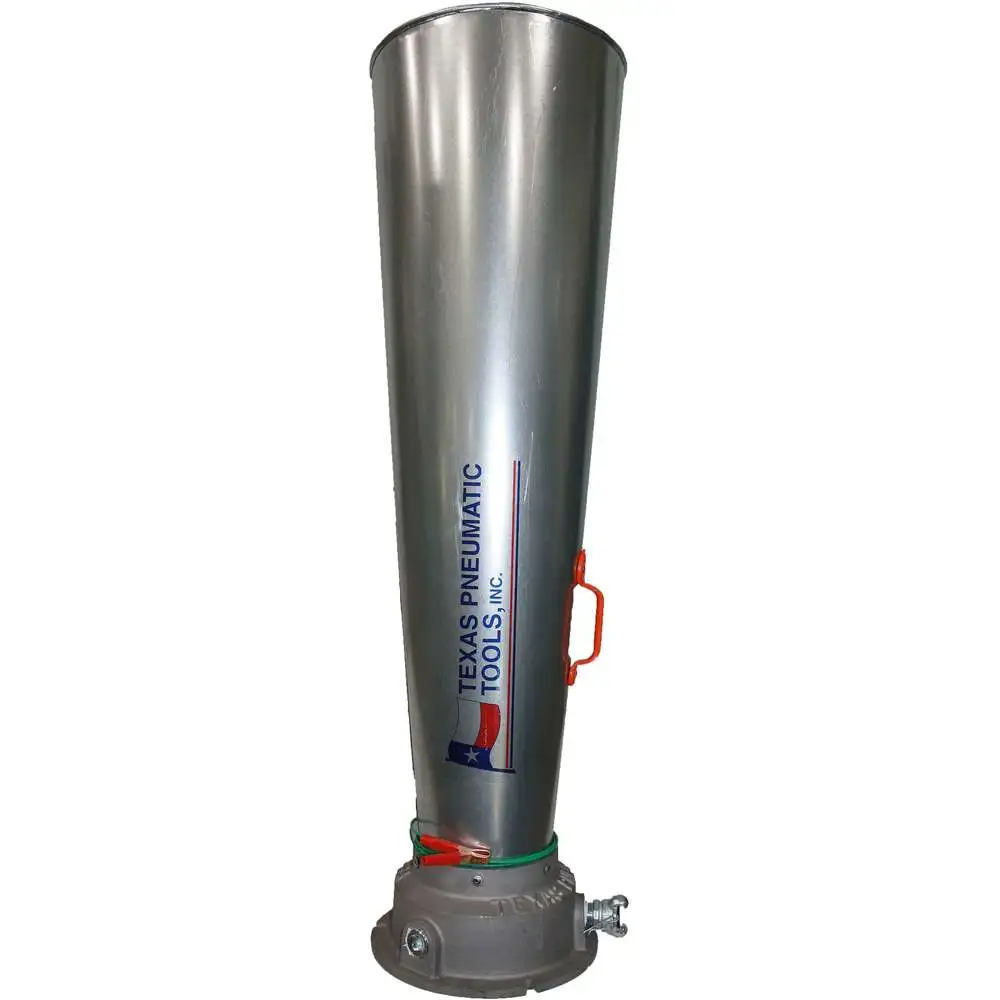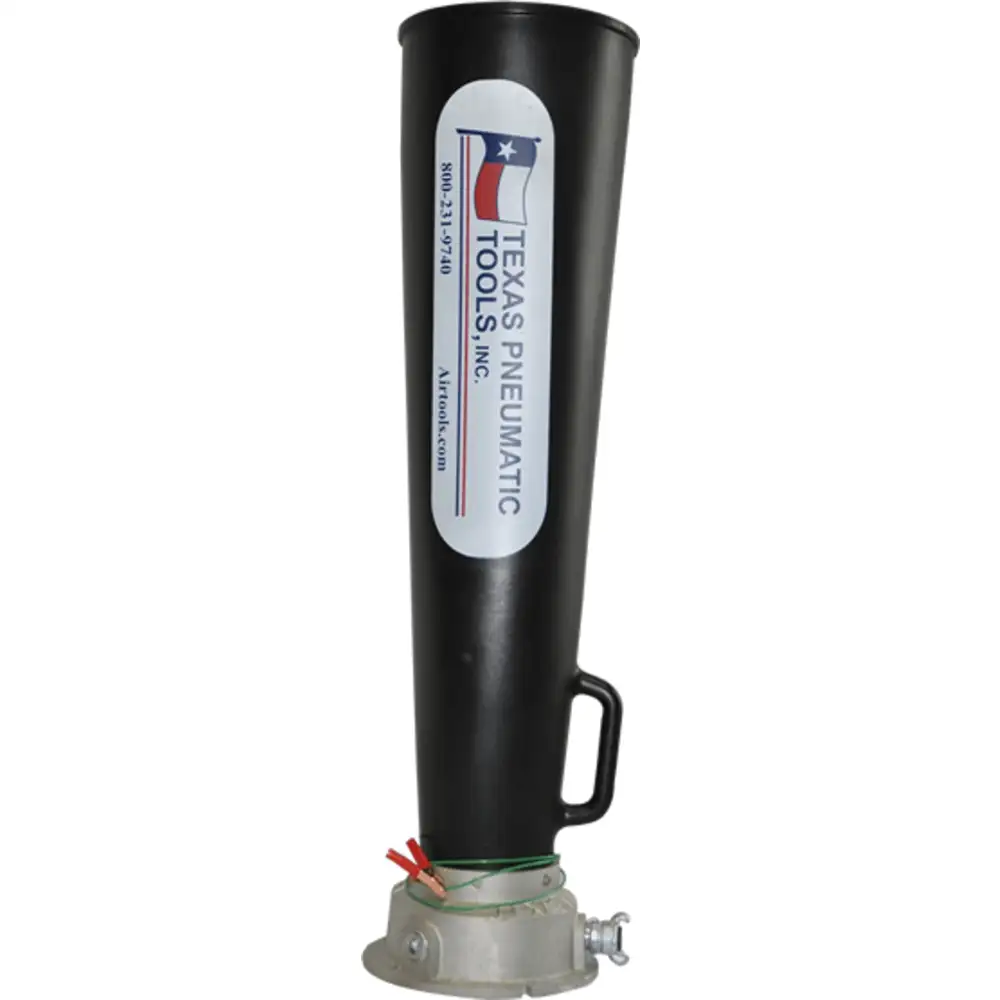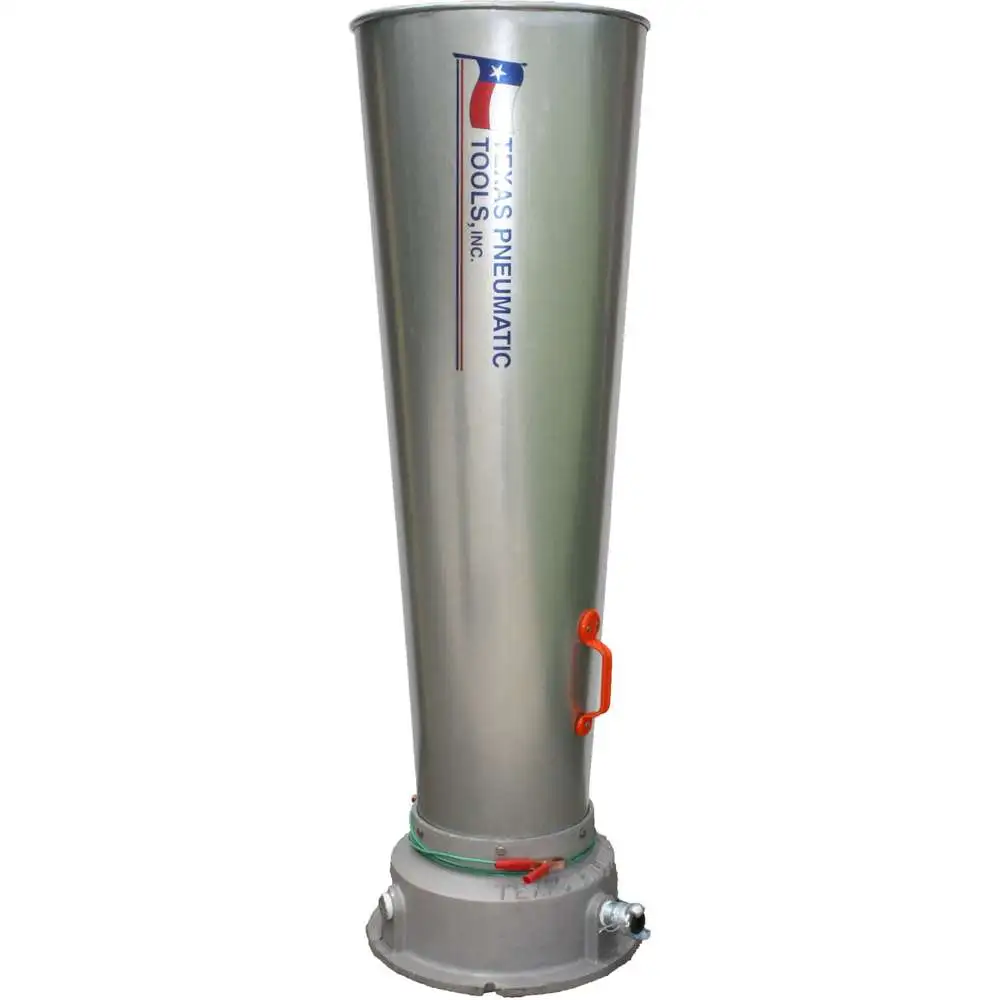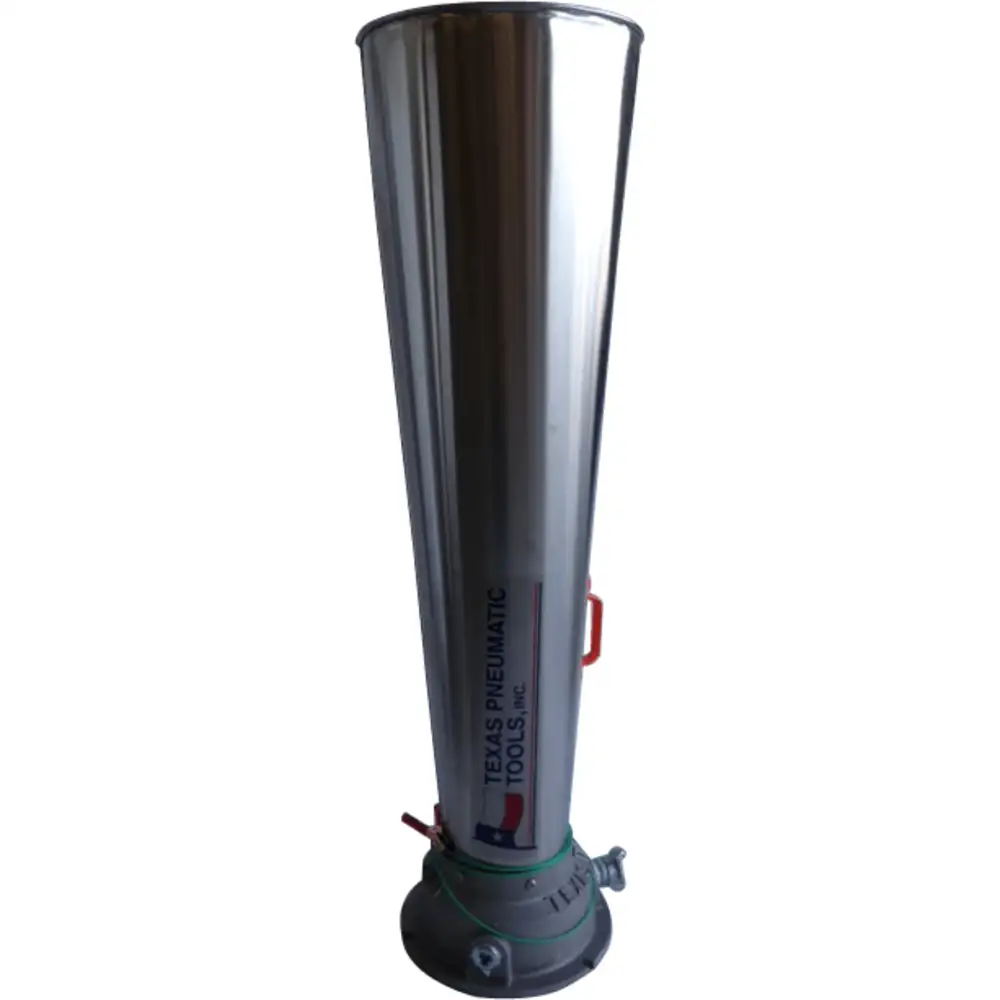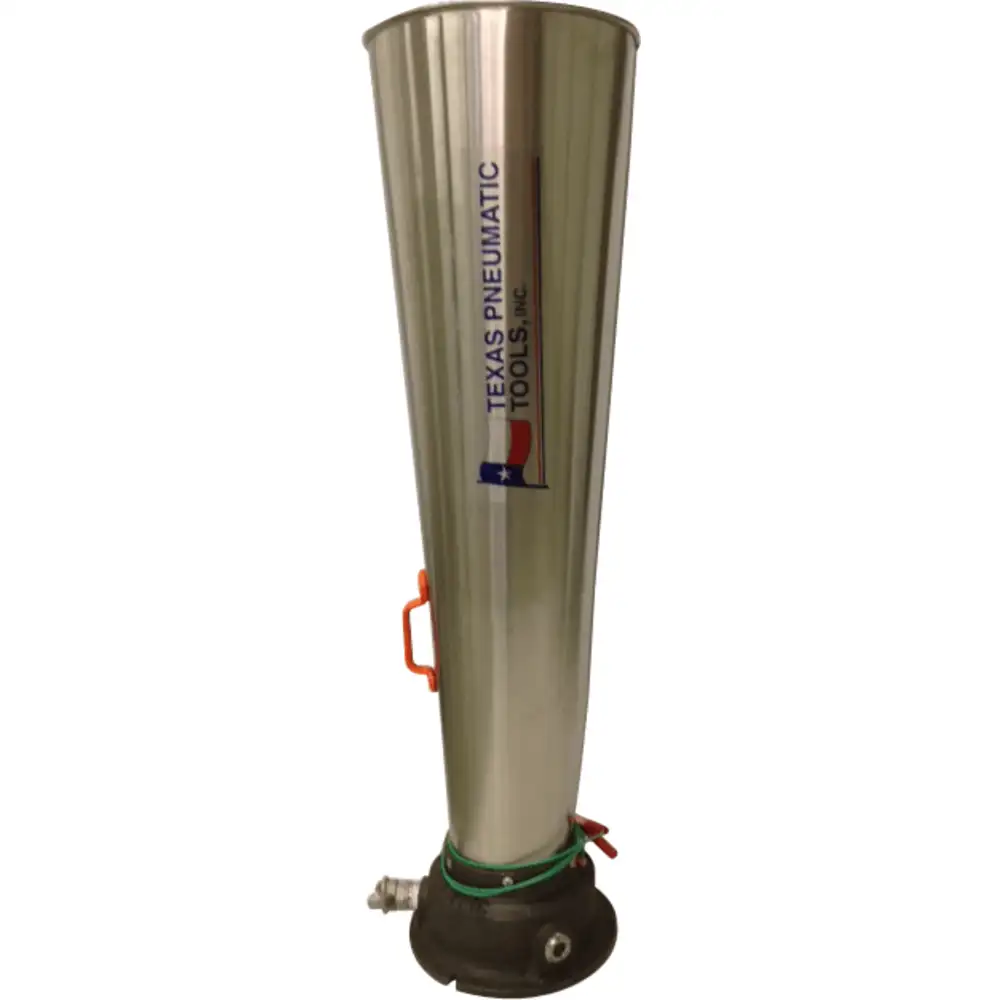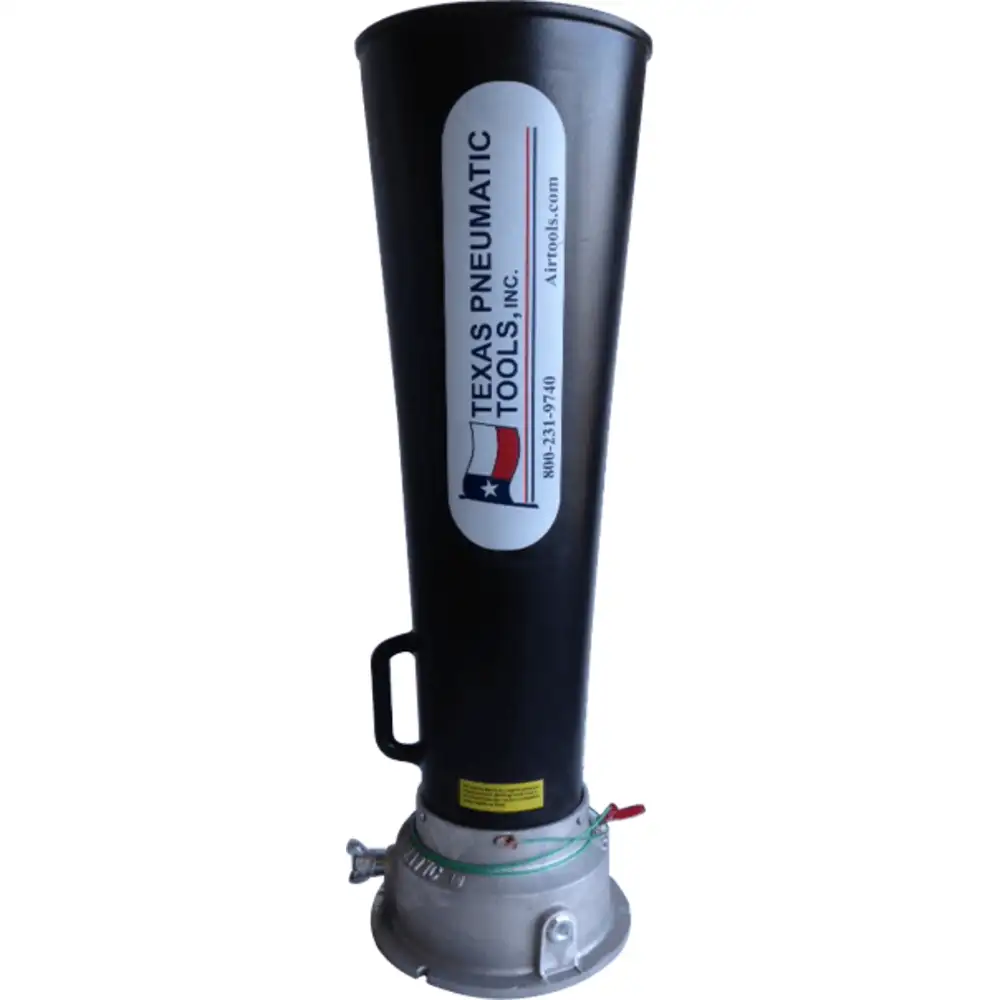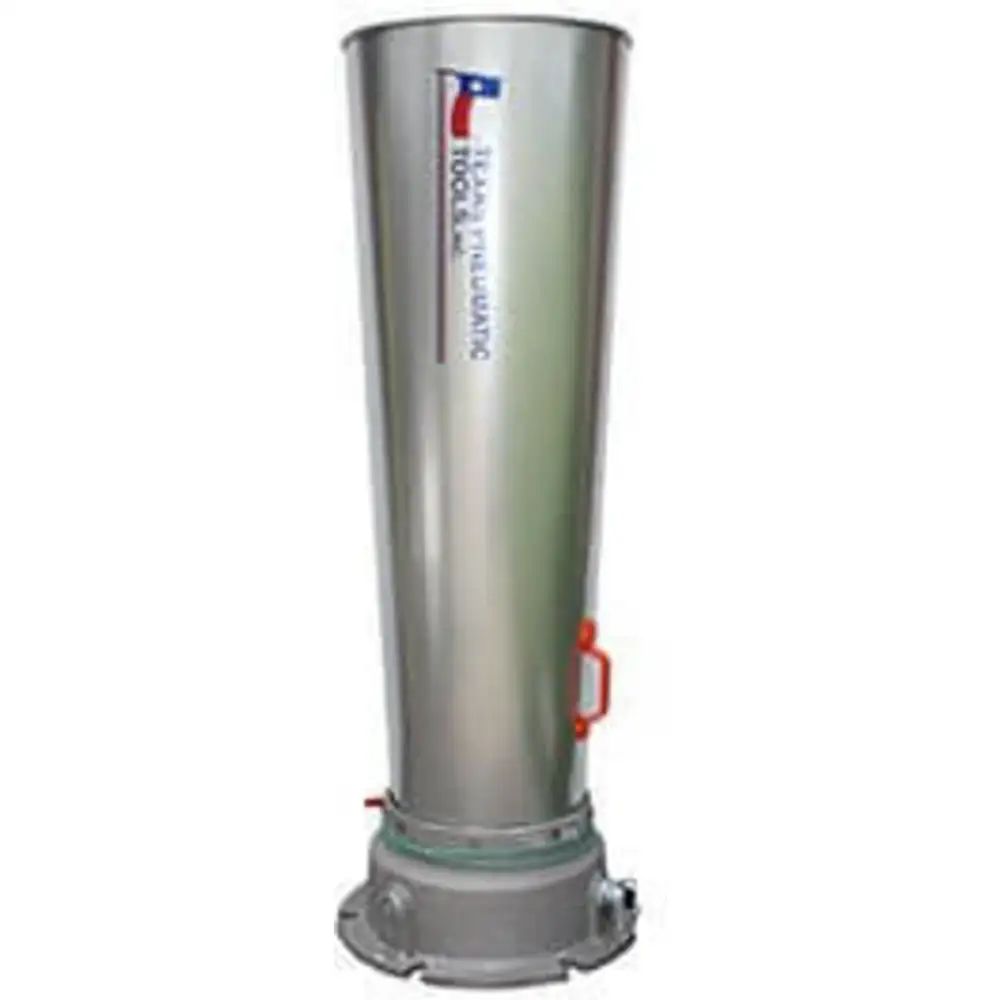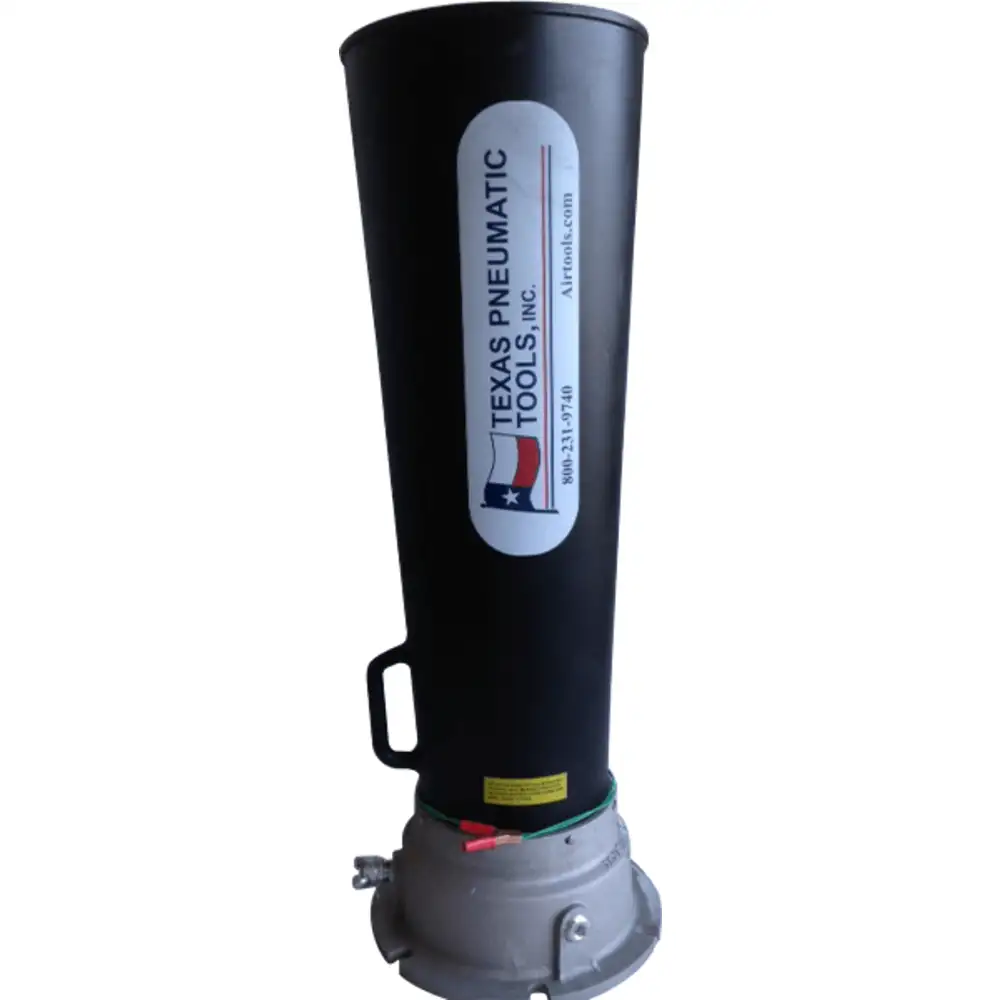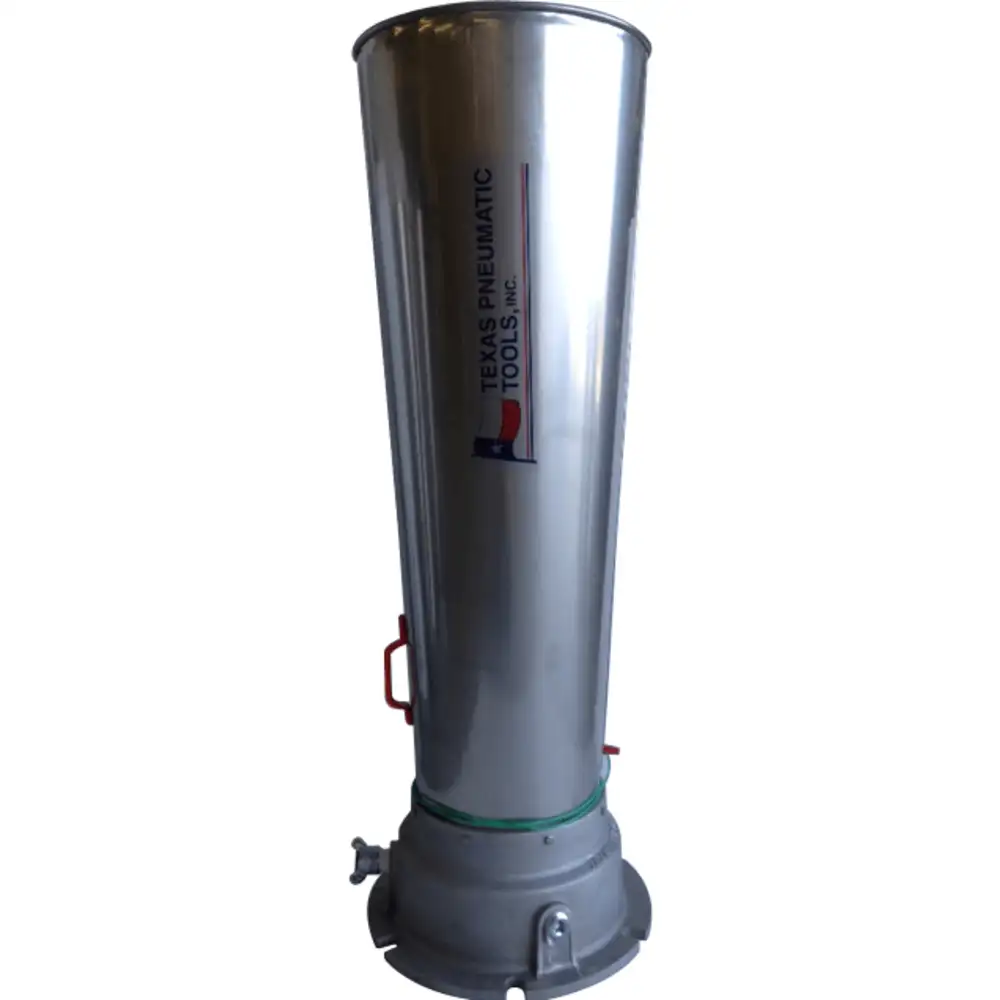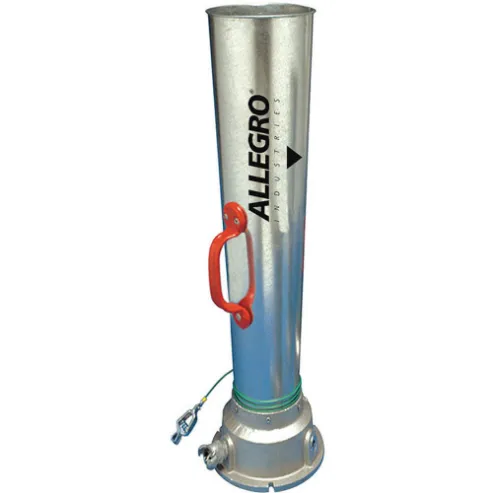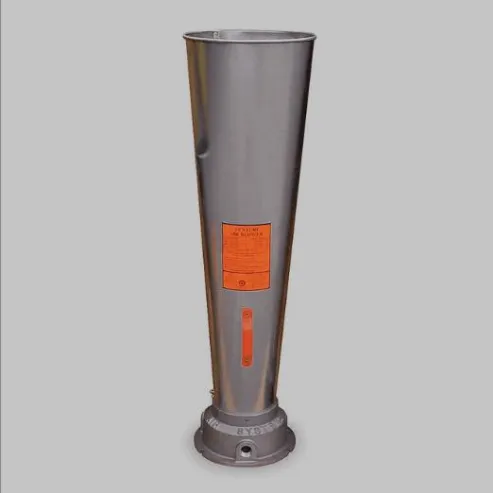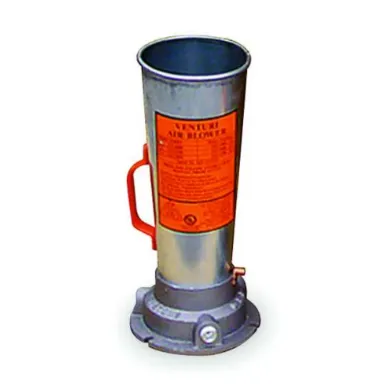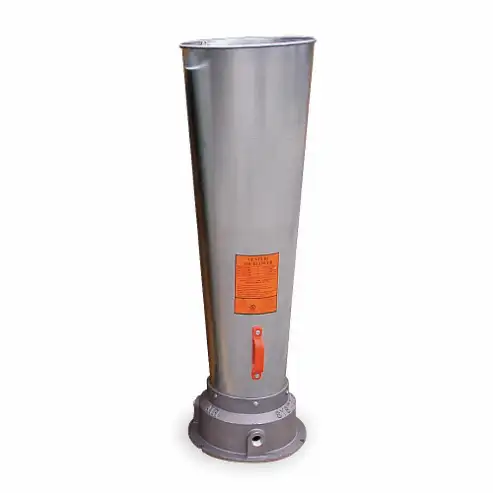Frequently Asked Questions
What are some precautions that one must take while using Venturi air blowers?
- To ensure compliance with Federal, State and Local laws, proper ventilation procedures should be followed.
- Follow ANSI / API 2015 and 2016 procedures for work in hazardous locations. Electric grounds or static grounds are attached to the bases of all blowers.
- When using an air blower in a volatile atmosphere, the user should always connect a ground wire to discharge static electricity and prevent build-up.
- Make sure that the aluminium base is not dragged along the surface of the steel tank.
- Periodic cleaning with a steam cleaner is the most effective way to prevent nozzle jets from clogging.
- Be sure to secure the air blower in place before turning on the air supply, otherwise, it will move around.
- Before ventilating confined spaces, always check for hazardous gases and sufficient oxygen with a calibrated multi-gas monitor.
- Always have the right respiratory equipment for ventilated workspaces and emergency rescue,.
- Always wear sturdy and snug-fitting clothing. Never wear loose clothing or anything that could get caught on controls or moving parts.
How do I choose the correct blower to ventilate an area?
The user must determine the total volume (in cu.ft) of the space to be ventilated. It is recommended to use a blower capable of delivering 20 exchanges of air per hour. You can screen your requirements on our site, using filters, to narrow down your choices for easy browsing. You can further connect with our customer representatives for more detailed information and guidance.
What is the different types of ducting available for Venturi blowers?
Ducting for Venturi blowers is offered for both standard and statically conductive environments. Statically conductive ducting is available in five different diameters (8, 12, 16, 20 and 26 inches). The ducting is retractable, has a non-collapsible design and meets ASTM 227 standards.
Can a blower be placed vertically above a manhole?
Yes, if it's supported safely, with adequate ingress / egress, vibration, movement and weight mitigation.
When should a confined space be ventilated?
Unless confined spaces are free from atmospheric hazards, they should be purged and / or ventilated before workers enter, to ensure that acceptable atmospheric levels will be maintained while workers are inside.
How to ensure safety while using Venturi air blowers?
- Always connect a ground wire to discharge static electricity and prevent build-up when working in a volatile atmosphere.
- Avoid dragging the aluminium base along the surface of the steel tank.
- Securely fasten the air blower before turning on the air supply.
- Before ventilating confined spaces, use a calibrated multi-gas monitor to check for hazardous gases and ensure sufficient oxygen levels.
- Ensure appropriate respiratory equipment for ventilated spaces and emergency rescue situations.
- Avoid wearing loose clothing or any items that could become entangled in controls or moving parts.
What do I mantain these confined space venturi blowers?
- Regular Cleaning: Clean the venturi blower regularly to remove dirt, debris and contaminants. Use a soft brush or cloth to gently wipe the exterior surfaces. Avoid abrasive materials that could cause damage.
- Inspect and Clean Air Passages: Check the inlet and outlet air passages for blockages or obstructions. Clear any debris or foreign objects that hinder airflow. Utilise compressed air or a vacuum if needed.
- Check Filters: If your Venturi blower is equipped with filters, regularly inspect them. Clean or replace the filters according to the manufacturer's recommendations to maintain proper airflow and prevent clogging.
- Lubrication: Refer to the manufacturer's guidelines to determine if lubrication is required for your venturi blower. Follow the recommended procedures and intervals for smooth operation.
- Tighten Connections: Periodically inspect and tighten all connections, including hoses, fittings and fasteners. Loose connections can result in air leaks and reduced efficiency.
- Check Motor and Electrical Components: Examine the motor for signs of wear or damage. Ensure that all electrical components are proper and in good condition. Consult a qualified technician for repair or replacement if necessary.
- Follow Manufacturer's Guidelines: Always adhere to the manufacturer's specific maintenance instructions for your venturi blower. They may provide additional recommendations or procedures tailored to your specific model.
How to prevent clogging?
- Regular Maintenance: Perform regular maintenance on the Venturi blower, following the manufacturer's guidelines, to keep it clean and free from debris.
- Proper Filtration: Use suitable filtration systems or filters to prevent debris, dust, and particles from entering the blower, reducing the chances of clogging.
- Avoid Excessive Particulate Exposure: Minimise the blower's exposure to excessive amounts of particulate matter, like dust or fine particles, which can lead to clogging. Implement measures to control and minimise particulate generation in the surrounding environment.
- Regular Inspections: Routinely inspect the blower's inlet and outlet areas for signs of obstruction or blockages. Promptly remove any accumulated debris or foreign objects.
- Proper Ventilation System Usage: Ensure that the venturi blower is appropriately sized and matched with the ventilation system. Proper airflow and pressure management can decrease the risk of clogging.
 Change country
Change country
